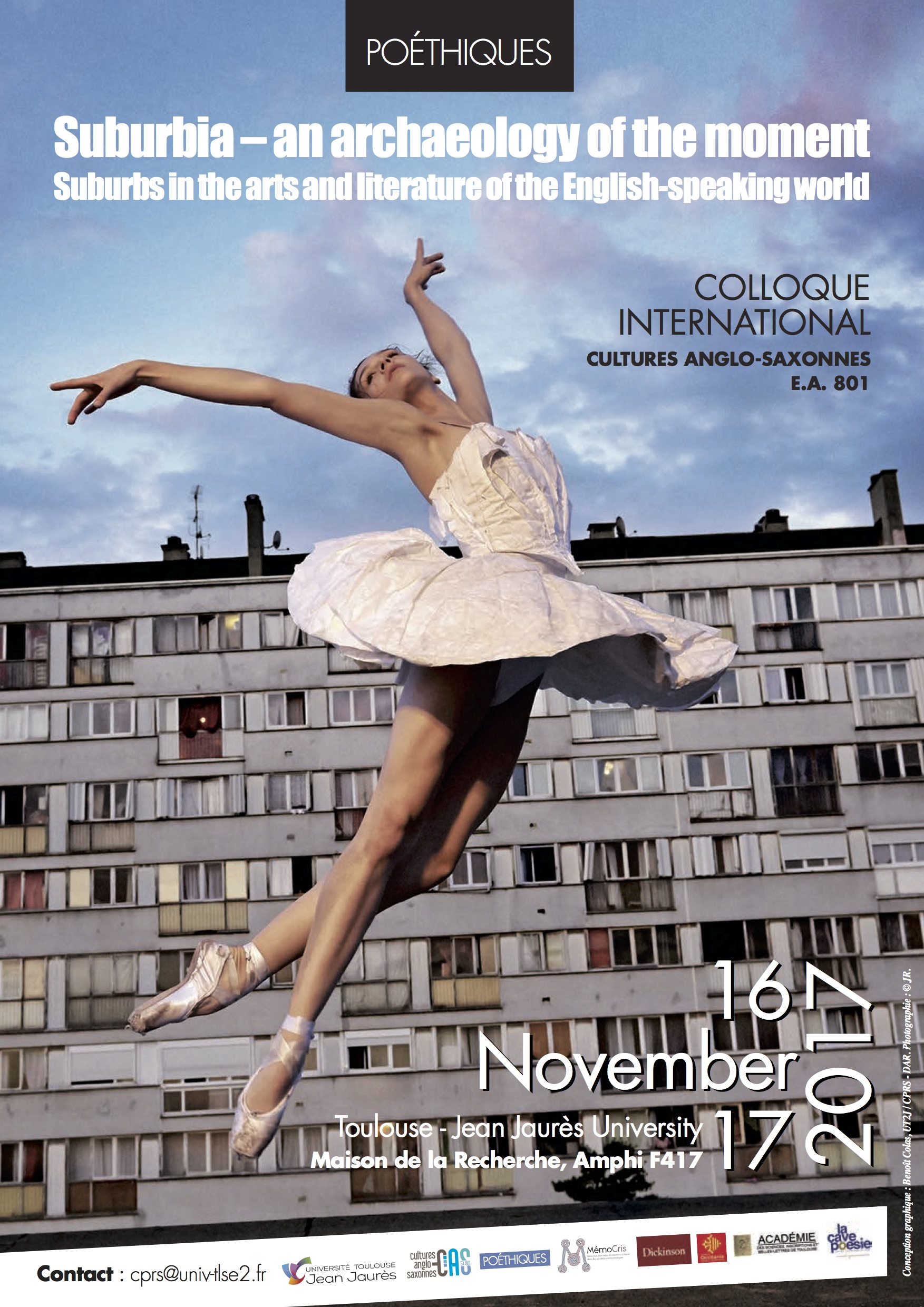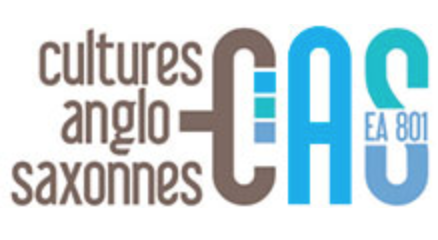-
Partager cette page
Colloque international "Suburbia_An archeology of the Moment. Suburbs in the arts and literature of the English-speaking world"

Ce colloque international s’inscrira dans la continuité des manifestations de Poéthiques consacrées à la représentation de la ville dans la littérature et les arts (L’Art de la Ville, 2008, Descendre dans la Rue, 2010, Coïncidences, 2011, Marcher dans la Ville, 2014, Small Town America, 2015, City Ruins, 2016). Il s’inscrira aussi dans le cadre des activités de l’axe 2, « Lieux Communs » du laboratoire Cultures Anglo-Saxonnes.
Cette manifestation fait aussi suite à un colloque sur la représentation de la ville sud-africaine qui a eu lieu à Nanterre en 2013, et que le CAS avait co-organisé, dans le cadre de la Saison officielle de l’Afrique du Sud en France.
Call for papers:
As French philosopher Jean-Christophe Bailly put it, suburbia is “always over there, elsewhere”. When viewed as the interval between the city and nature, suburbs are first of all designated as what they are not—downtown. Suburbia is what is not to be seen—what the city rejects, or feeds upon: housing projects, condos for commuters, factories, warehouses, malls, vacant lots, abandoned industrial spaces, cemeteries, highways, airports… Suburbia is what is not to be spoken about, it is a zone both identified and undefined, “a suburb without urb,” as Ian Sinclair formulated it.
Wouldn’t it therefore be fitting for art and literature to give some form of visibility and nameability to this intermediary space which, beyond the clichés and codes, never ceases to reinvent itself? For, if one follows Bailly’s vision, “suburbs are the backstage of the city, its warehouse, its reserve, its draft” and deserve to be explored beyond the usual complaint on its dull vacuity, its state of abandonment, neglect, or its artificial nature. Literature, painting, photography, performance art, installation art and cinema have the power to requalify a space in which a new mode of existence is created, a way of living in passing.
One finds numerous and various forms of suburbia throughout history and across the English-speaking world. In the UK, it rapidly became a waste-land (“a dumping ground,” for Peter Ackroyd) where the city pours everything unwanted and ugly, such as factories, working-class housing, marshalling yards, lunatic asylums, nursing homes, and later on, sports fields, recycling plants, or metal dumps. Yet, despite it all, suburbia also retains some traces of rural life, in its gardens and on its walking paths. Literature often depicts suburbs as a place of moral depravity, social degradation, but also of inspiration for the imagination. It is “a projected fantasy space” according to Ged Pope. In America, cars transformed the suburban landscape into a uniform space with endlessly duplicated homes. The views from the sky by William Garnett made their way into fiction, which accounts for the emptiness of suburbia, the crises hidden in monotonous suburban lives (S. Lewis, J. Cheever, J. Updike, A. Miller…). Contemporary literature (W.C. Williams, J. Franzen, R. Moody…) and photography (G. Crewdson) reveal the alienating and lethal conformism of a space which indifference turned into a commonplace. And yet, crises and breakdowns also revive the colors of the ordinary, as shown in the works of Raymond Carver, Jeffrey Eugenides, or Stephen Millhauser. In Africa or India, suburbs provide the measure of the political reconfigurations that shaped the land. In South Africa in particular, historical changes triggered an inversion of the urban migration trajectories, with the populations that had been chased away from the city progressively resettling in the downtown neighborhoods relinquished by wealthier people fleeing to gated communities in the suburbs. If some writers cast an amused eye on this evolution (I. Vladislavić), it does not come about without tensions: the zones of contact/friction conjure up violently contrasting images.
Beyond conformism, contrasts or conflicts—all recorded by art and literature, either through irony or disillusion—suburbia prompts poetic and aesthetic reinvention. Like those characters going across fences, through swimming-pools (J. Cheever), walking along highways (J.G. Ballard, I. Sinclair), art and literature do not accept the idea of a non-space. They manage to reveal the unexpected within resignation, they delineate the future within the “the dumps of the nonhistorical past” (R. Smithson), they illuminate what French writer Marielle Macé terms “this disposition to see life individualize, and individualize itself in ideas of a form”. Between construction sites and ruins, suburbia hence arises as what it could be—an area where one can glimpse, in the space of an instant, humane urbanity, or urban humanity. These occur in London’s “edgelands,” “places that thrive on disregard,” where poets can freely practice a form of de-centered meditation or deploy a meticulous inventory of normality (P. Farley and M. Symmons Roberts). They can also happen on an improvised cricket field, on the edges of Manhattan, where men coming from all over the world transform their movements into a new language (J. O’Neill, Netherland). Through the prism of art and literature, can’t suburbia become, as philosopher Bruce Bégout views it, a “new way of thinking and making urban space”?
Conférenciers invités: Bruce Bégout, philosophe et écrivain, Paul Farley, poète anglais, Michael Symmons Roberts, poète anglais, Ivan Vladislavić, écrivain sud-africain.
Université Toulouse Jean Jaurès, CAS E.A. 801, Poéthiques, LABEX MémoCris, Dickinson College, Académie des Sciences, Inscriptions et Belles-Lettres de Toulouse, Région Occitanie.

